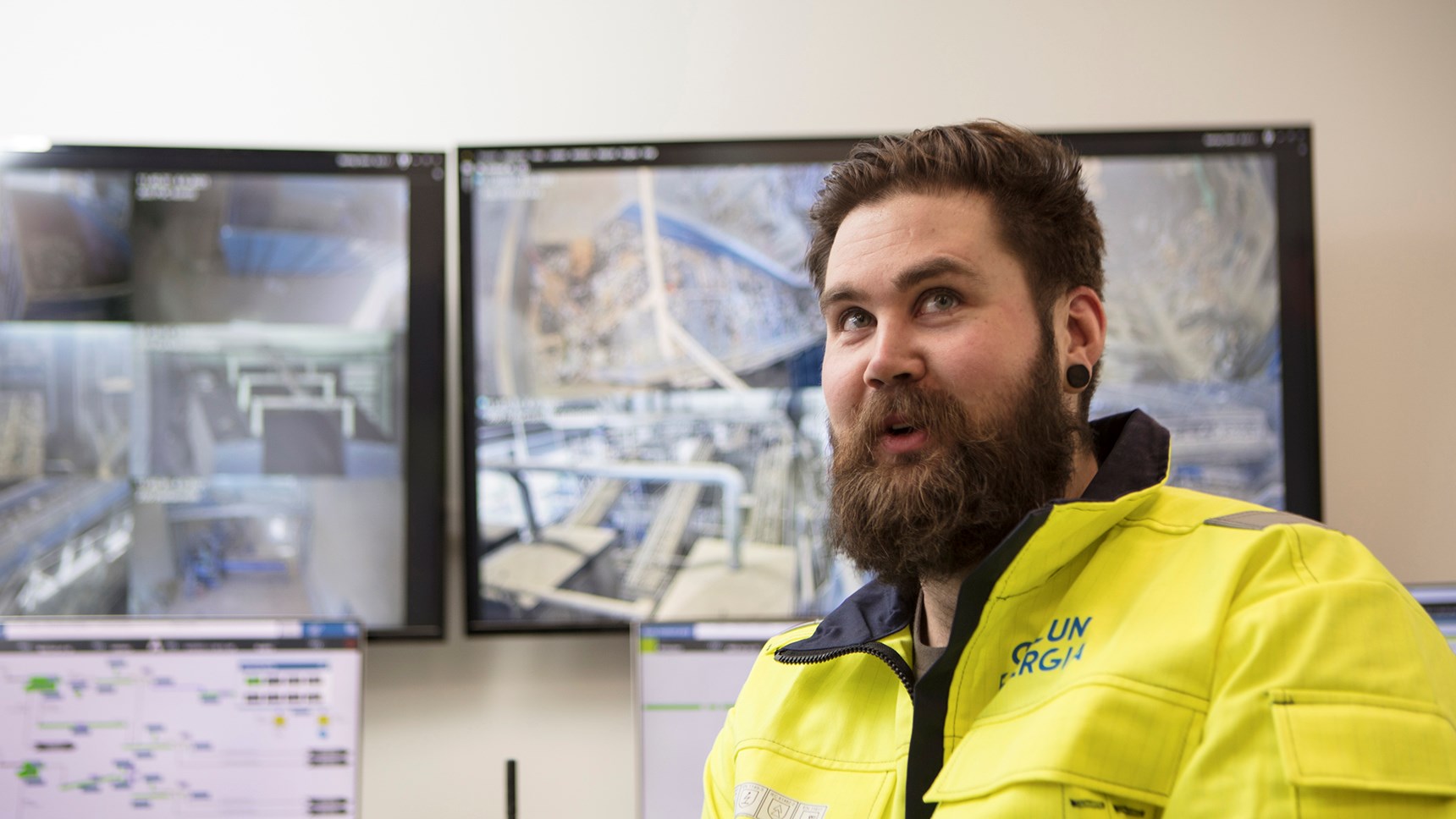
To Oulu on rubber tyres – the value of waste is increasing
In Savukoski, the municipal consortium Lapeco’s ecoASEMA station manager advises a couple where to sort their waste. Their large trailer construction and demolition waste from an outbuilding, from plasterboard to roofing felt. Unsorted construction and demolition waste is dumped into a pile. The load also contains scrap metal, which the couple leaves at the metal collection point.
EcoASEMA is open every other Friday. That’s enough to cover the needs of a thousand residents in the municipality. Lapland’s waste management municipal consortium Lapeco is responsible for the municipal waste management in nine municipalities in Lapland, as well as sorting the waste. Each municipality has its own recoverable waste station or a larger transfer station. The materials from the stations are transported by trucks: recyclable metal scrap travels to Tornio, and unsorted construction and demolition waste goes to Oulu.
The demolition waste from the old outbuilding does not sit around long at the station. It is loaded onto a truck and then it travels through the rugged scenery of Lapland on rubber tyres to Oulu. The journey is about 380 kilometres long.
Syklo takes care of the sorting and separating of materials in an ultra modern way, preserving the value of the waste
The Syklo waste sorting plant, which was commissioned last year in Rusko, Oulu, receives the load from Savukoski. Syklo processes 100,000 tonnes of construction and demolition waste, as well as commercial and industrial waste from northern Finland every year.
The remains of the couple from Savukoski’s small outbuilding also enters the maw of the sorting plant—a facility that finds the best place for the materials to continue on to through a multi-stage process.
In the plant, metals, including nails from boards and unwanted materials such as PVC plastic and electrical wires, are sifted out. ”Demolition waste, in particular, is quite challenging as it contains materials that have not been made to be recycled. For example, wood, which is abundant in buildings, has often been varnished or painted, or some other material, such as nails or plastic, is attached to it,” says Heikki Harju-Autti, circular economy manager at Syklo.
The sorting is carried out mechanically and optically by highly automated equipment. Even before the waste is fed in, rough sorting is carried out, which removes problematic pieces such as ropes that would get tangled up in the equipment. In the actual equipment, the waste is crushed and magnets are used to recover magnetic metals.
Recyclable materials such as plastics, metals, wood, and fibres are sorted out of the waste. For example, after the treatment, the plasterboard walls of the old outbuilding from Savukoski will end up in southern Finland, where the plaster gets a new lease on life as new plasterboard.
Approximately 30% of the mass of material processed by the plant is used for recycling and recovery. Even dust can be utilised. Because of such a high rate of recovery, the value of the waste, as well as the price received for it, increases.
Construction and demolition waste produces a lot of fine minerals, such as concrete and dust. It is screened and processed and used for landfill construction and other earthworks that allow fine materials to be used.
High-quality fuel
50–60% of the material mass is used as high-quality, solid recycled fuel in Oulun Energia’s biopower plant, which produces electricity and district heating.
”This material is not suitable for recycling, but it is better than the material that continues its way to incineration at the ecopower plant,” explains Harju-Autti.
The purity of the fuel to be incinerated at the biopower plant is important so it can be incinerated without damaging the boiler; the temperature and pressure of the steam produced at the biopower plant are high to maximise electricity production. That is why municipal waste, for example, is not suitable as fuel for the biopower plant.
Only the waste that is not used for recycling or as recycled fuel is incinerated at the ecopower plant.
Transporting waste is the best solution
Let’s return to Savukoski for a moment. Prior to the completion of the waste treatment plant, construction and demolition waste sent to Lapeco’s ecoASEMAs was treated on-site. It was mechanically sorted and crushed. Everything that was not suitable for recycling or was not hazardous waste was transported to the Laanila ecopower plant in Oulu for incineration.
”Now we mechanically sort and crush considerably less, which reduces the amount of noise pollution. We still treat stone materials such as concrete waste locally, as we can use them in ecoASEMA’s structures in accordance with the MARA regulation,” says Janne Vuolli, operations manager at Lapeco.
What is the point of transporting waste hundreds of kilometres, wouldn’t it be smarter and more ecological to treat the waste at its source?
”When the amount of waste in small municipalities is small, its treatment is expensive, as there is no equipment for it. There is no further treatment of recycled materials, not even a waste incinerator from which to recover heat. When the waste is sorted in Oulu, its utilisation becomes more efficient. This means that we significantly increase the value of the waste,” says Harju-Autti.
And with regard to the environmental burden of transporting waste, it is true that the transportation produces emissions. In this respect, the world is not yet ready, but there is hope that emissions from transportation will decrease. Even in the near future, heavy traffic will be able to chug along in an environmentally friendly way, as, for example, biogas solutions become more common in traffic.
This article was originally published in Oulun Energia’s customer magazine 2/2021. Written by Kati Jurkko, photos by Kati Leinonen.
